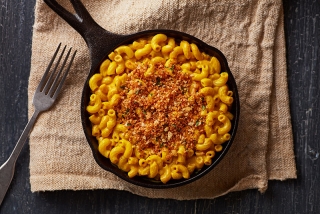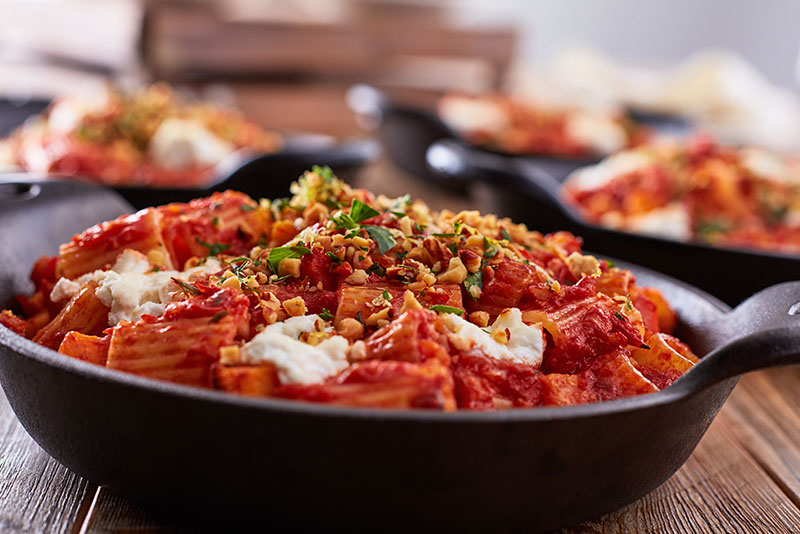
Influencing the Diets of Children Through Menu Development
28 February 2020Strategies for updating kids’ fare beyond offering all menu items in smaller portions.
By Lisa Parrish, GMC Editor
 Culinary programs offer menu development as a typical foundation course. Professional chefs take those academic lessons and creatively apply them in the restaurant atmosphere, incorporating sustainably grown food, fresh ingredients and cost-conscious dishes for diners. If this amount of thought and planning goes into menu development, why then are kids’ menus stuck with nuggets, hamburgers and macaroni and cheese?
Culinary programs offer menu development as a typical foundation course. Professional chefs take those academic lessons and creatively apply them in the restaurant atmosphere, incorporating sustainably grown food, fresh ingredients and cost-conscious dishes for diners. If this amount of thought and planning goes into menu development, why then are kids’ menus stuck with nuggets, hamburgers and macaroni and cheese?
According to a 2018 study by the Clinical Nutritional Research Journal, seven out of 10 parents wanted smaller, lower-priced children’s portions of all menus offerings. The study discovered this request was based on parents’ desires for healthier items and for their children to develop a taste for diverse fare.
The National Restaurant Association also saw this parent craving and began the Kids Live Well program, encouraging restaurants to offer two meals, two side dishes and beverage options that met rigorous nutritional standards. The voluntary program began in 2011 and moved forward with mixed results. Researchers from the Harvard T.H. Chan School of Public Health found that three years after the program launched there was no meaningful change in calories, saturated fat or sodium on children’s menu, even though more than 150 chains with 42,000 U.S. locations were taking part.
“Although some healthier options were available in select restaurants, there is no evidence that these voluntary pledges have had an industry-wide impact,” study lead author Alyssa Moran said in a statement. Healthy options sat beside traditional, unhealthy options on kids’ menus and children choose the more familiar fare.
Research by Barilla Listening Room Intelligence Report: Kids’ Menus also found that Millennial parents wanted healthier options. However, when the report looked at social media chatter, much of the topics indicated that children were more comfortable with familiar and simple offerings. Restaurants frequently discussed on social media as having “good kids’ menus” included Cheesecake Factory, Olive Garden and Red Robin.
The Takeaway
Perhaps a small step toward influencing the diets of children may be taking the familiar kid dishes and creating healthier versions.
 Yury Krasilovsky, executive foodservice chef at Barilla US, noted a possible change in children’s fare. “Kids menus have been so static for so long – chicken fingers, hot dogs, and mac and cheese. Yes, it’s because kids will order them and like them. But, those same kids are having Korean tacos and sushi in school,” he said. The chef continued that making smaller portions of adult menu items is a sound strategy, but to also consider flavor and nutritional improvements in the kids’ menu staples too.
Yury Krasilovsky, executive foodservice chef at Barilla US, noted a possible change in children’s fare. “Kids menus have been so static for so long – chicken fingers, hot dogs, and mac and cheese. Yes, it’s because kids will order them and like them. But, those same kids are having Korean tacos and sushi in school,” he said. The chef continued that making smaller portions of adult menu items is a sound strategy, but to also consider flavor and nutritional improvements in the kids’ menu staples too.
One improvement Krasilovsky suggests is to create dishes that contain more vegetables and are plant-based, whether kids know it or not. “It’s also about what is replaced – a Bolognese with a bit more veggies than meat is just as delicious but will have less fat and calories. Similarly, a mac and cheese that’s built around bechamel with pureed veggies instead of heavy cream will have the familiar color, rich mouthfeel and indulgent flavor but far less fat and calories,” he said.
“A classic like spaghetti and meatballs might seem like something you don’t want to mess with. But you can make that marinara sauce with a bit of pureed carrots, celery and onion – they’ll be invisible in the sauce and add great flavor and nutrients. And by now chefs should know about improving items like meatballs by blending in mushrooms or legumes. You can swap in 30 percent mushrooms for ground meat and get a great tasting product that holds up better than the original,” he suggested.
Another update to a kids’ classic pasta is the type of pasta offered. Legume pastas are good choices for parents looking to avoid gluten. Also, whole grain pastas bring the added benefits of fiber. However, Krasilovsky noted that traditional pasta is still a healthy, complex carbohydrate. “Wheat is still a plant and semolina pasta has been plant-based all along,” he said.
Krasilovsky made one more suggestion about improving kids’ menus with healthier choices and that is just that – give kids the choice. “Kids love to be able to customize and make things their own,” he said. “Have an interactive element to the meal - something as simple as a dipping sauce or a build-your-own concept works really well.”
Photos by Barilla Foodservice USA
